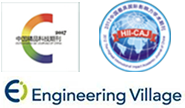Abstract:
With the rapid advancement of electronic devices toward miniaturization, high integration, and increased power density, efficient heat dissipation has become a critical challenge. Developing advanced thermal management materials is thus urgently required. Polymer composites offer advantages over traditional thermally conductive materials, including lightweight properties, corrosion resistance, and ease of processing. A crucial aspect of achieving high thermal conductivity in polymer composites is the design and construction of efficient three-dimensional (3D) thermal conductive networks. In recent years, strategies combining the design of 3D filler networks with filler hybridization involving various sizes and shapes have emerged as a key research focus. First, this paper reviews the theoretical foundations and mathematical models of thermal conduction in polymer composites. Then, it highlights common methods for constructing 3D thermal conductive pathways within polymer matrices, including premade 3D filler skeletons, segregated structures, and double-percolated networks. Furthermore, it discusses recent progress in the structural design and performance optimization of polymer composites with hybrid fillers, focusing on 2D fillers. Topics include the bridging and synergistic effects between different fillers, the construction and functional integration of binary filler networks, and the orientation regulation of fillers and exfoliation-processing integration of polymer composites. Finally, this review summarizes the current challenges in the field and outlines potential future research directions to address these issues.


 下载:
下载: